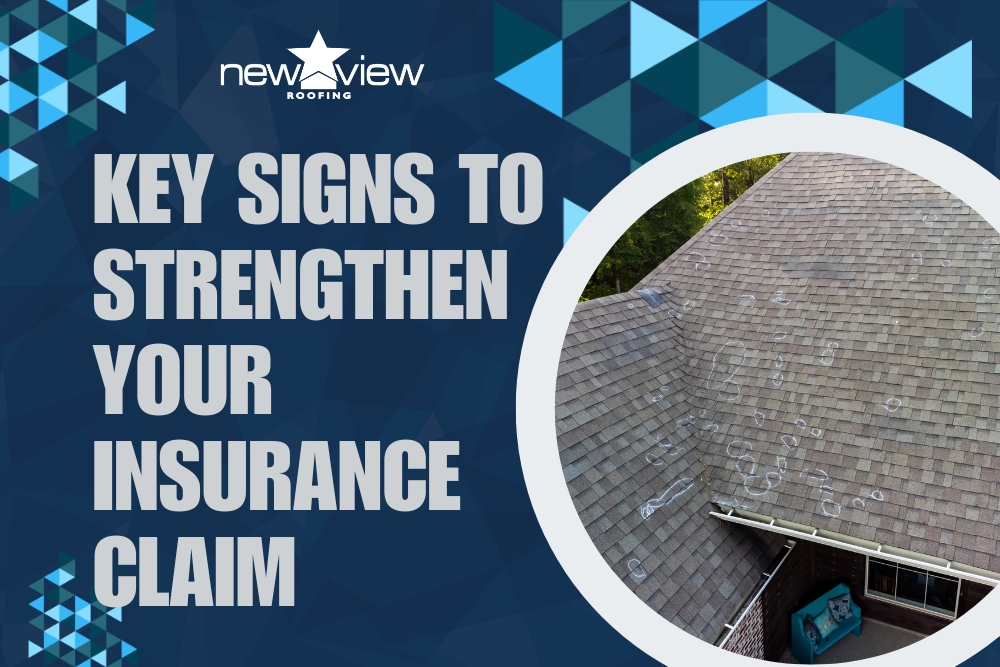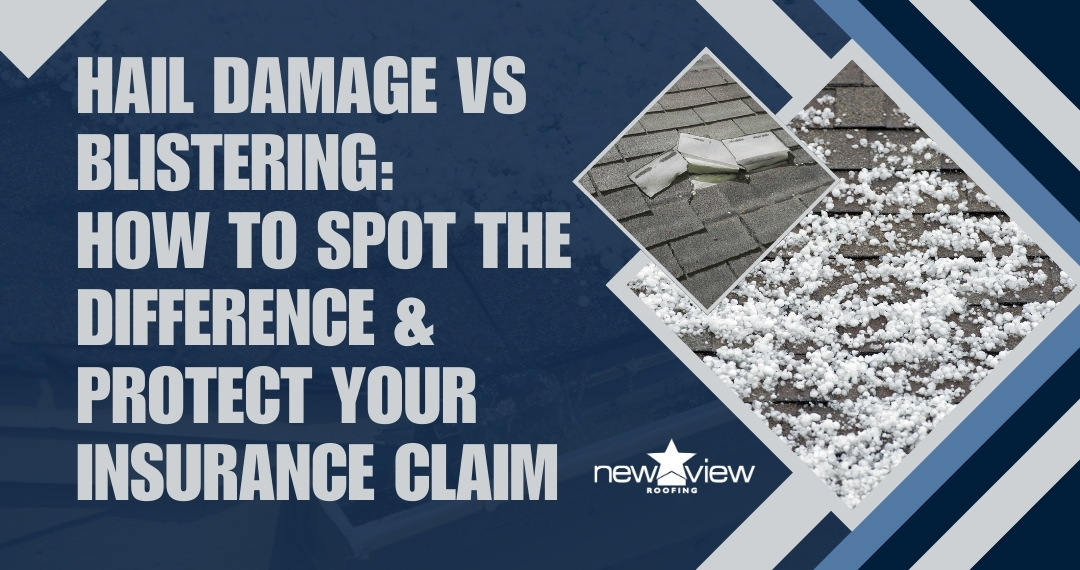It can be difficult for a homeowner (or a novice homeowner’s insurance inspector) to tell the difference between hail damage vs blistering on a roof. While both of these issues indicate a damaged roof, knowing the difference between hail damage vs blistering can make a big difference when it comes to an insurance claim.
Hail damage is caused by the external impact of hail hitting your roof. Blistering is caused by internal issues in your roof. Both of these types of damage to your roof can look similar, but they have different causes. An experienced roofing contractor can tell the difference at a free roof inspection.
Learn how to identify hail damage vs blistering on your Dallas roof. Watch out for common signs, how to prevent them, and ways a roofing contractor can strengthen your insurance claim.
Hail Damage vs Blistering of Shingles: Why It Can Look So Similar
A popped blister to a shingle can mimic the look of hail damage. If an insurance inspector looks for blistering, they could see hail damage and assume it’s shingle blistering. Since blistering is unrelated to storm damage, insurance may choose not to cover it.
What Causes Blistering of Shingles and Why Doesn’t Insurance Cover It?
The reason that insurance will rarely cover blistering is that it is typically caused by a defect in the shingle caused by a manufacturing issue.
Manufacturing Defects
Shingle blistering can be caused by leftover hydrocarbons in the asphalt bitumen. These leftover hydrocarbons are the result of imperfections in the crude oil refinement process. They can cause micro-explosions that kick off the granules from the shingle. This type of damage usually occurs within the first year.
Poor Ventilation
Another reason blistering may occur is improper ventilation. This is the single most common reason for blistering of shingles. Ventilation is needed from the eaves to the ridge and at the proper capacity or heat becomes trapped. Proper installation of a roof ventilation system can prevent blistering from this cause.
How to Differentiate Hail Damage vs Blistering
When the shingles on a roof blister, roofers notice that not all of the blisters will pop to mimic hail damage. Some just bubble and stay that way. If your roof has no bubbles, it’s an indicator that the damage is from hail and not blistering. Experienced roofers performing an inspection after a storm will look for evidence of a direct and forceful impact to verify hail damage.
Signs of Hail Damage
 To prove hail damage and support your insurance claim, look for a variety of evidence of hail damage to your roof:
To prove hail damage and support your insurance claim, look for a variety of evidence of hail damage to your roof:
- Concave impressions with embedded or crushed ceramic shingle granule
- Actual fractures in the bitumen and fiberglass reinforcement mat
- Granule loss, including evidence of granules in the gutters
- Randomness of the impact damage across the slopes of a roof
- Imprints to the soft metal parts of your roof
- Spatter marks on oxidized surfaces
- Hail damage to other areas of your home such as your gutters or fence.
Signs of Blistering
Blistering will show a different type of damage that may appear, by the untrained eye, similar to that of hail damage. They almost always happen early in a roof’s life. In order to rule out blistering from a manufacturing defects or improper ventilation, we can demonstrate a lack of the following:
- Rigid sidewalls of exposed areas of bitumen or fiberglass reinforcement
- Size variation of the damage down to one millimeter
- Un-popped blisters.
If you get free annual roof inspections and your roof isn’t new, the documentation provided each year can demonstrate when the damage occurred, bolstering the strength of your claim that it was caused by a recent storm.
Hail Poses a Serious Risk to Dallas-Area Roofs
Hailstones can range in size from tiny pea-sized stones to hailstones that are larger than golf balls. Hail season in Dallas lasts throughout the spring from March until May with an average of 10 and 20 hail storms each year. Supercell thunderstorms can also produce the largest hailstones because of their strong updrafts.
The best way to protect yourself from paying out of pocket for hail damage is to get a free roof inspection. By documenting that your roof is in good condition before the storm season hits, you can prove to your insurance company that your roof was damaged in a recent storm.
Not all insurance policies cover hail damage. Be sure to check your policy to make sure you have coverage for hail damage.
Need a Roofing Contractor to Identify Hail Damage vs Blistering?
New View Roofing is a locally and veteran-owned roofing business in Dallas with over 25 years of experience in roofing and home remodeling. We offer free annual roof inspections as well as free inspections after your home his hit by a storm. Our team of contractors is knowledgeable and skilled in identifying hail damage vs blistering and can help you craft the evidence required to have your roof repaired or replaced by your insurance company.








